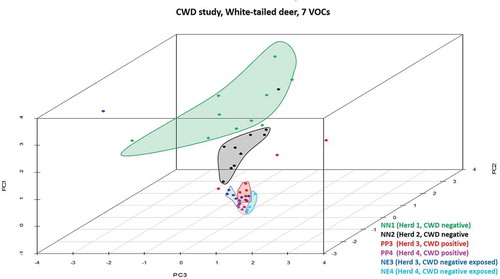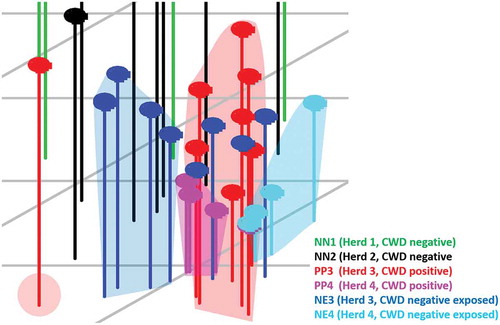Figures & data
Table 1. Linear Discriminant Analysis Classification Models of CWD positive and negative deer.
Table 2. Tentative identification of seven peaks used to discriminate between CWD-positive, -negative exposed, and -negative deer.
Table 3. Potential sources of tentatively identified volatile organic compounds used to discriminate between CWD positive and negative deer.
Table 4. Comparison of CWD assay sensitivities (SN) and specificities (SP).
Table 5. Herd identification, animal classification, CWD status, and the number of animals from each sample group used in the study.


